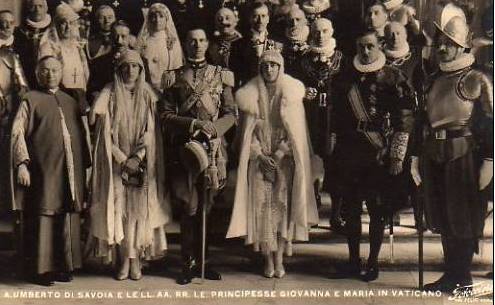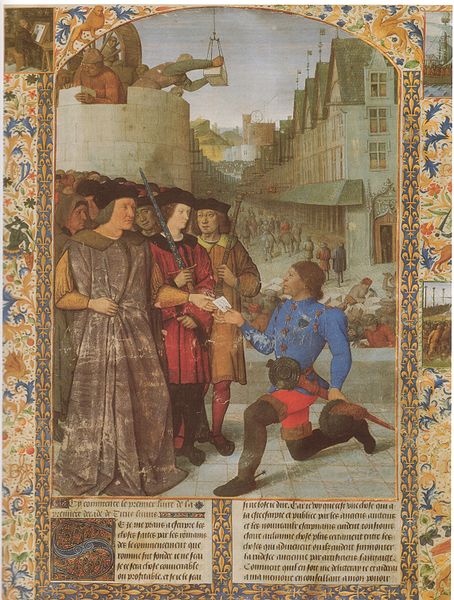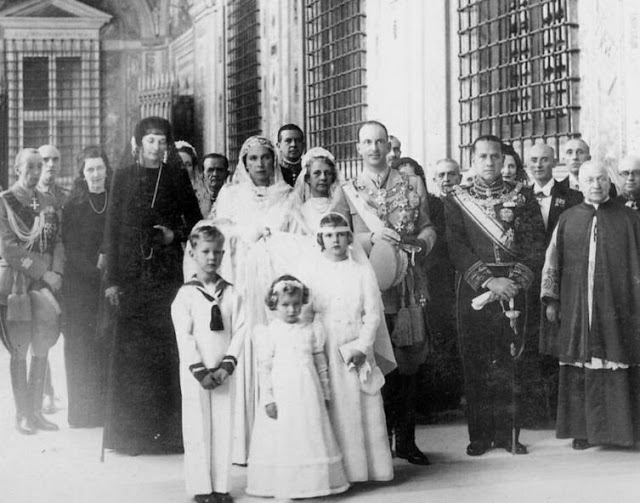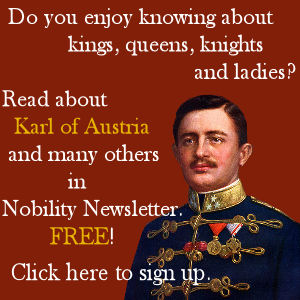In the Middle Ages, the nobility had constituted a social class with specific functions within the State, which entailed certain honors and corresponding obligations.
During modern times this situation had gradually lost its stability, prominence, and brilliance, so that even before the Revolution of 1789, the distinction between the nobility and the people was considerably less marked than in the Middle Ages.
Throughout the egalitarian revolutions of the nineteenth century, the position of the nobility suffered successive mutilations of such extent that its political power in the Italian monarchy at the end of World War II survived solely as a prestigious tradition, which was seen, incidentally, with respect and affection by most of society. The republican constitution attempted to deal the final blow to the last vestiges of this tradition.

Crown Prince Umberto of Italy with his sisters Maria and Giovanna in the Vatican, along with Marquis Don Giovanni Battista Sacchetti, Major of the Apostolic Palace.
As the aristocracy’s political power declined, its social and economic standing followed the same trend, albeit more slowly. At the turn of the century, the nobles were still at the apex of the social structure, due to their rural and urban properties; their castles, palaces, and artistic treasures; the social renown of their names and titles; and to the excellent moral and cultural values of their traditional household environments, manners, lifestyle, and so on.
The crises resulting from World War I brought some changes to this picture. They deprived part of the noble families of their means of livelihood and forced many of their members to secure subsistence through the exercise of professions at variance, even when honest and worthy, with the psychology, customs, and social prestige of their class.
On the other hand, contemporary society, increasingly shaped by finance and technology, produced new relations and situations as well as new centers of social influence that were usually alien to the aristocracy’s traditional surroundings. Thus, a whole new order of things arose alongside the surviving old one, further diminishing the nobility’s social importance.
Finally, to all this was added an important ideological factor, also detrimental to the nobility. The worship of technological progress (1) and the equality proclaimed by the Revolution of 1789 tended to create an atmosphere of hatred, prejudice, defamation, and sarcasm against the nobility, which is founded upon tradition and transmitted in a way that egalitarian demagoguery most hates: by blood and cradle.
World War II brought additional and more extensive economic ruin to many noble families, worsening yet further the multiple problems the aristocracy had to face. In this way, the crisis of a great social class became acute and firmly entrenched. It was with this picture before him that Pius XII addressed the current situation of the Italian nobility in his allocutions to the Roman Patriciate and Nobility, which had obvious relevance for all the European nobility.
(1) The expression may appear a bit exaggerated to some readers. They will find it useful to consider the comments of Pius XII regarding this in his 1953 Christmas radio address cited in Chapter V, 3 c.
Plinio Corrêa de Oliveira, Nobility and Analogous Traditional Elites in the Allocutions of Pius XII: A Theme Illuminating American Social History (York, Penn.: The American Society for the Defense of Tradition, Family, and Property, 1993), 18-21.













